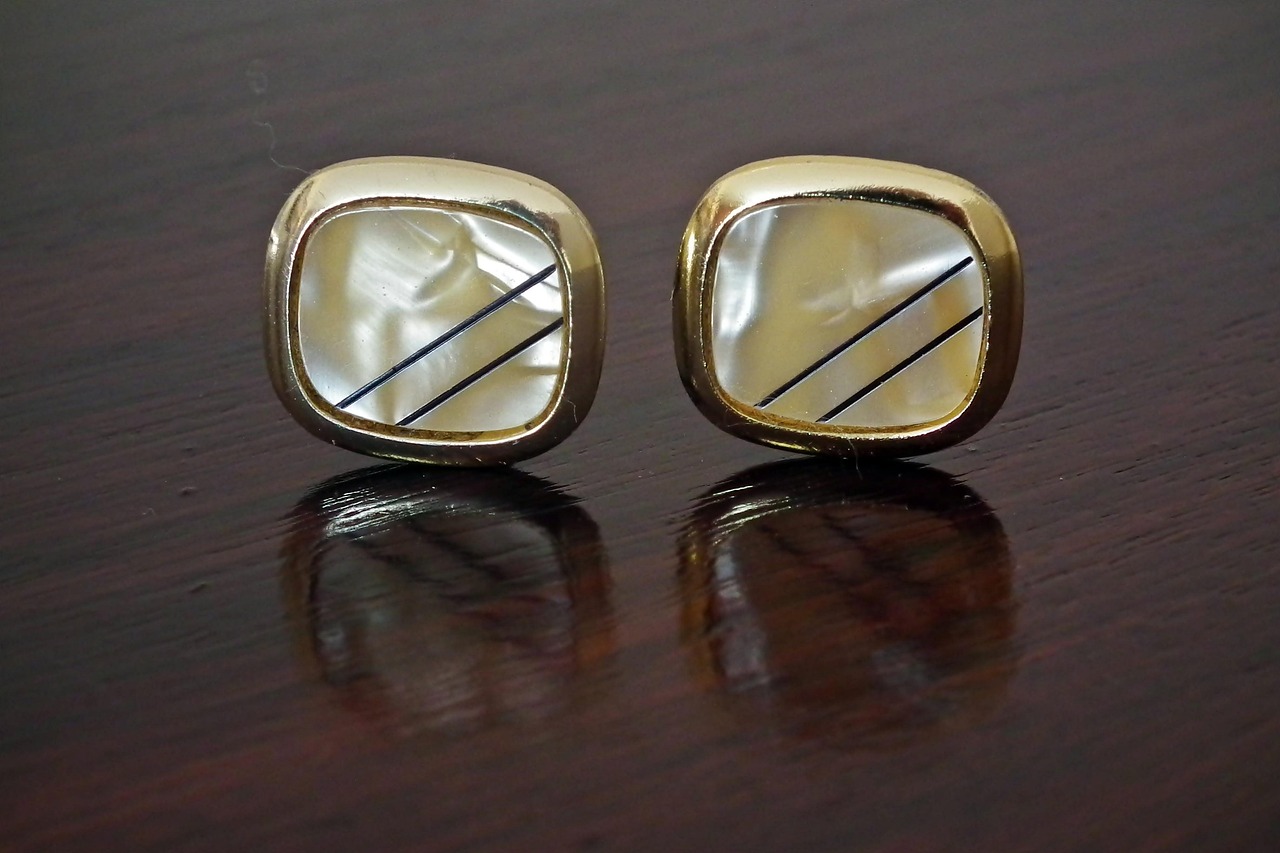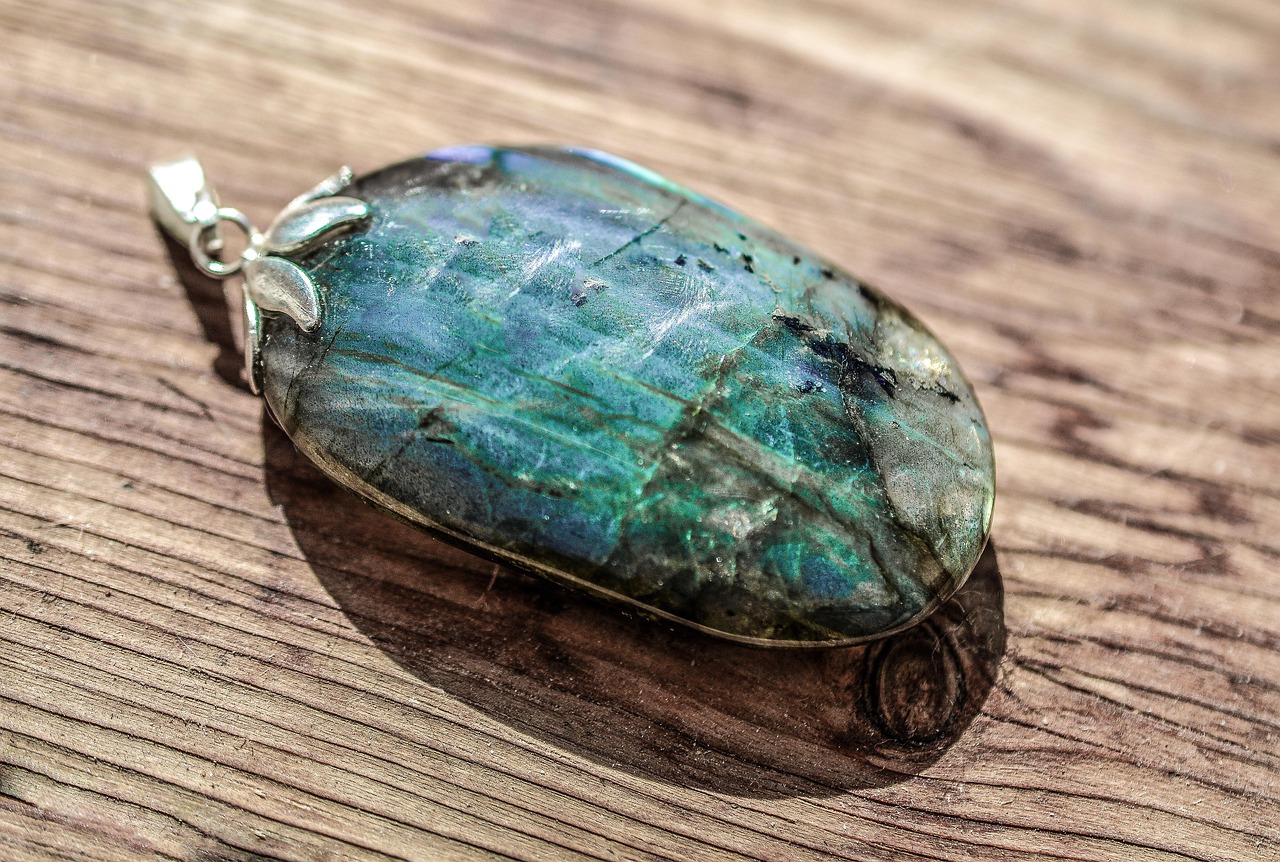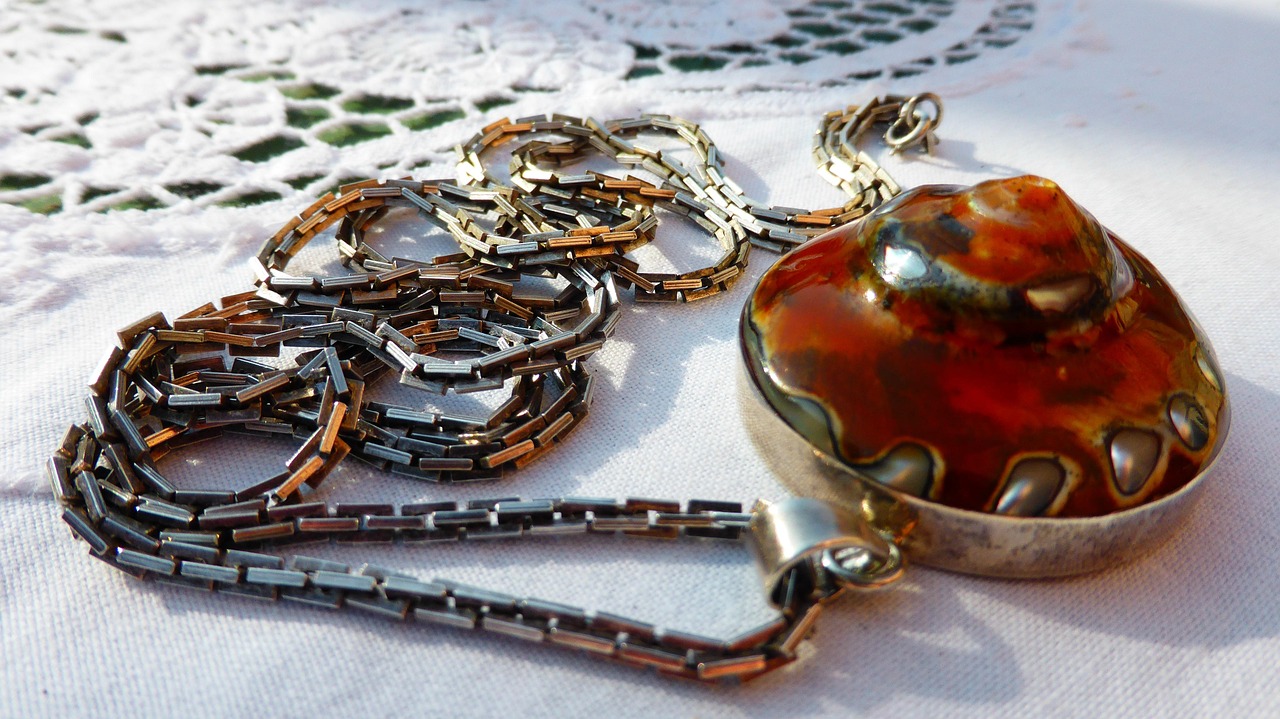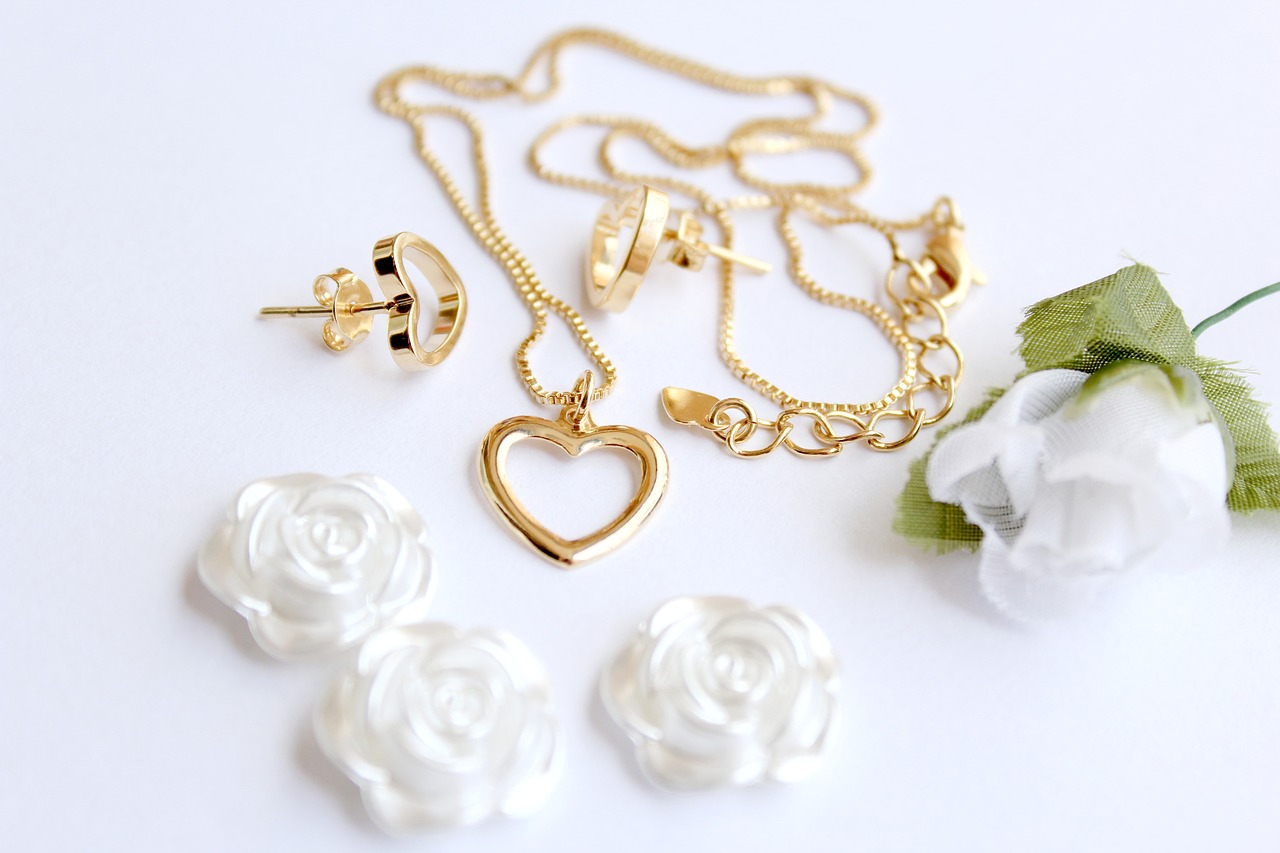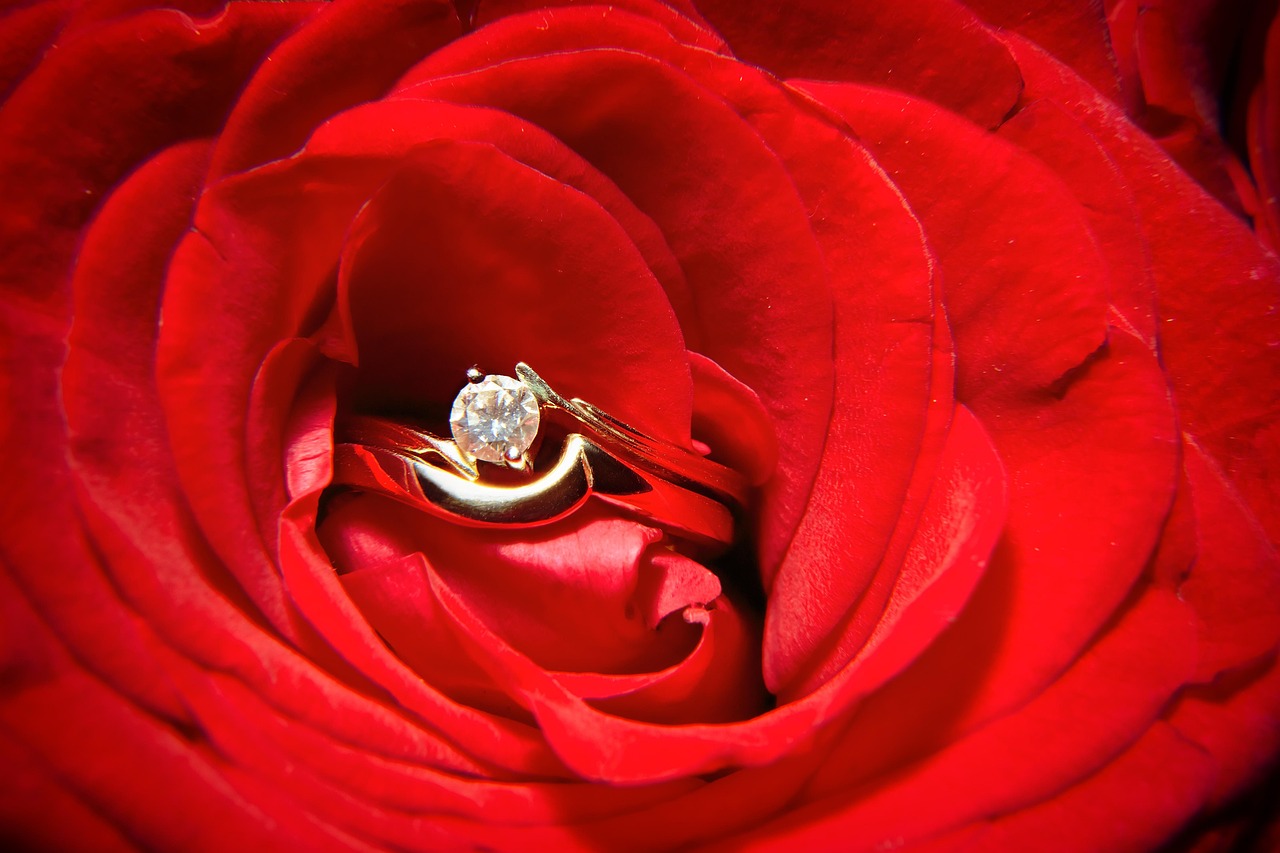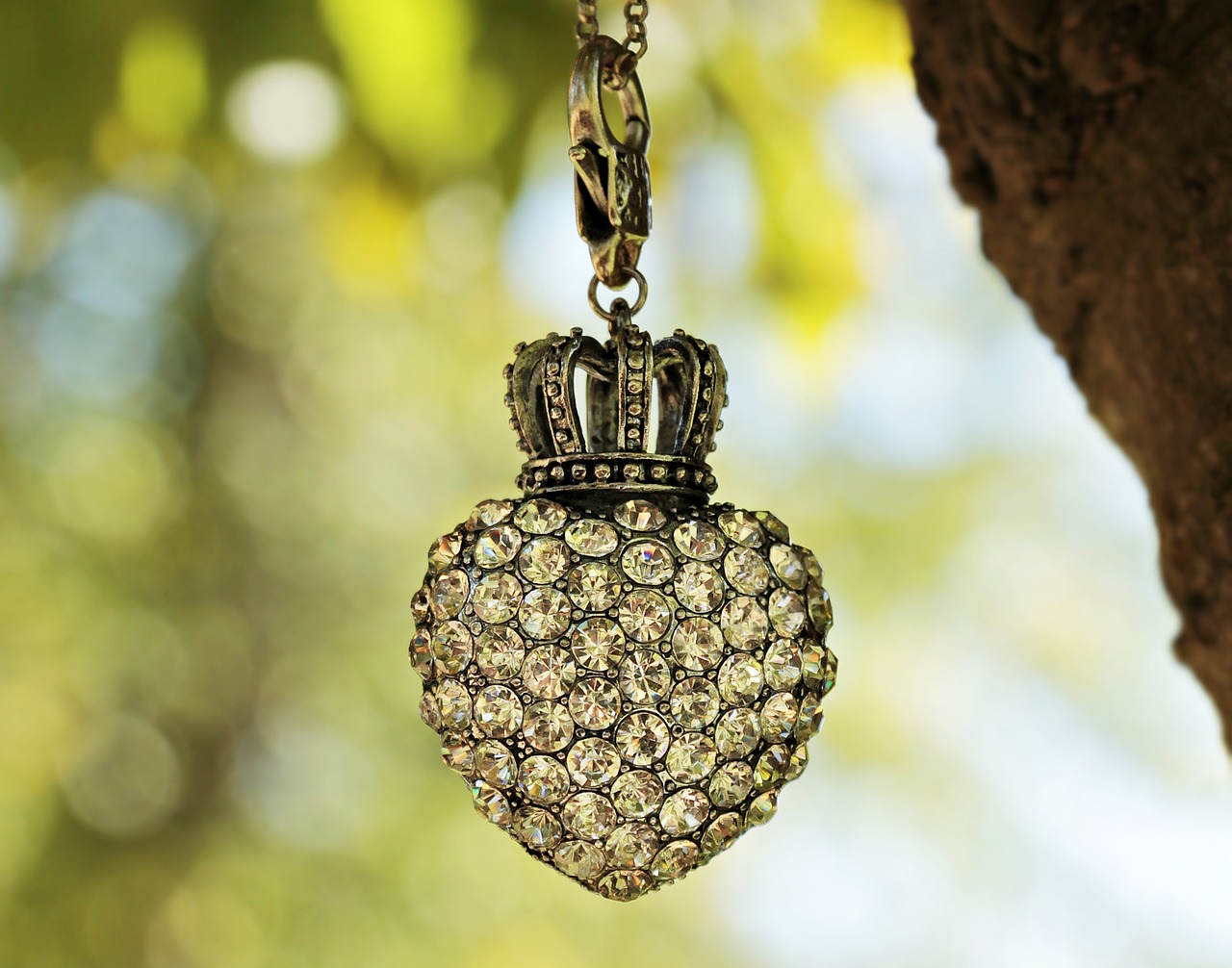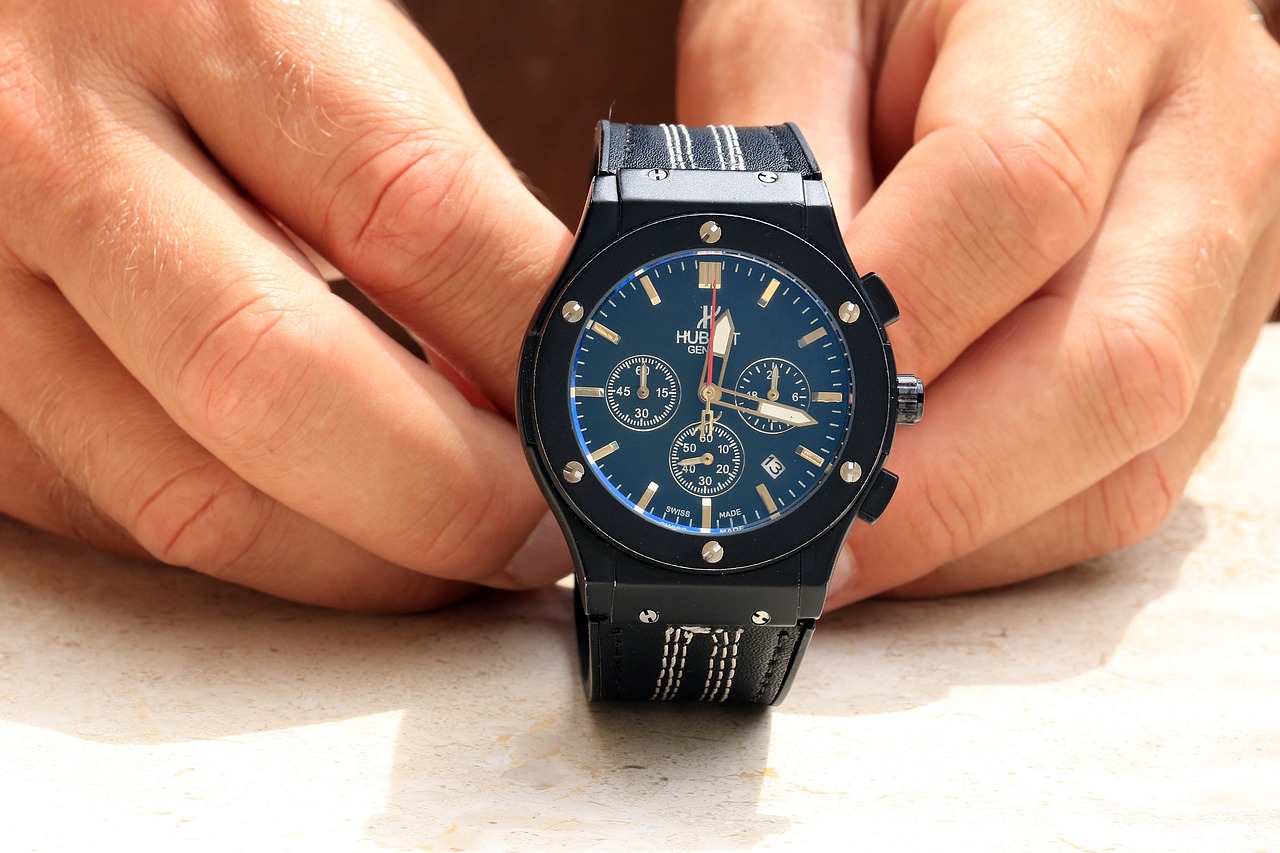This article will guide you through identifying valuable designer jewelry, offering insights into quality, brand reputation, and market trends to help you make informed investment decisions. Investing in designer jewelry can be rewarding, but understanding the nuances of what makes a piece valuable is essential.
What Makes Jewelry Designer-Worthy?
Identifying designer-worthy jewelry involves several key characteristics. Craftsmanship is paramount; high-quality pieces often exhibit meticulous attention to detail, showcasing the skill of the artisan. Additionally, brand heritage plays a significant role; established brands with a rich history often carry more value. Unique design features, such as limited editions or collaborations with renowned artists, can also enhance a piece’s investment potential.
How to Assess Jewelry Quality?
Evaluating the quality of jewelry is crucial for making sound investments. Key factors include:
- Materials: High-quality metals like gold and platinum are essential.
- Gemstone Authenticity: Genuine gemstones significantly increase value.
- Manufacturing Techniques: Look for signs of superior craftsmanship.
What Are the Key Materials Used in Designer Jewelry?
Designer jewelry typically features premium materials. Gold, for instance, is not only aesthetically pleasing but also has intrinsic value. Platinum is another valuable material known for its durability and rarity. Precious stones, including diamonds, sapphires, and emeralds, add both beauty and worth to jewelry pieces.
Why Is Gemstone Authenticity Important?
Authenticity is vital in the world of jewelry investment. Verifying a gemstone’s authenticity ensures that you are purchasing a genuine product, which directly impacts resale value. Always request certificates from reputable gemological laboratories when buying high-value pieces.
How Does Craftsmanship Impact Value?
The level of craftsmanship can significantly influence a jewelry piece’s worth. Intricate designs and attention to detail elevate market appeal, making well-crafted pieces more desirable among collectors and investors alike.
What Brands Are Recognized for Investment-Worthy Jewelry?
Some brands are synonymous with luxury and quality. Renowned names such as Cartier, Tiffany & Co., and Van Cleef & Arpels are known for producing investment-worthy pieces that retain their value over time. Familiarizing yourself with these brands can guide your purchasing decisions.
How to Research Market Trends in Jewelry?
Staying informed about market trends is crucial for making savvy investments. Research current trends by following jewelry publications, attending trade shows, and engaging with online forums. Understanding how trends affect the value of jewelry can help you make better investment choices.
What Resources Are Available for Jewelry Market Analysis?
Several resources can aid in market analysis, including:
- Jewelry Market Reports: These provide insights into current trends and pricing.
- Online Marketplaces: Platforms like eBay and 1stdibs can offer valuable data on selling prices.
- Social Media: Following influencers and brands can keep you updated on emerging trends.
How to Follow Auction Results for Valuable Insights?
Auction results can reveal market dynamics and help you assess jewelry value. Websites such as Christie’s and Sotheby’s provide detailed auction results that can inform your investment strategy.
How to Spot Fakes and Replicas?
Identifying counterfeit jewelry is crucial for investors. Look for signs such as poor craftsmanship, missing brand markings, or unusual weight. Always seek expert opinions when in doubt.
What Common Signs Indicate a Fake?
Common indicators of counterfeit jewelry include:
- Poor Quality: Look for irregularities in design and finish.
- Inconsistent Branding: Ensure brand markings are consistent with known standards.
- Unusual Materials: Counterfeit pieces may use inferior materials.
How to Verify a Piece’s Provenance?
Provenance adds immense value to jewelry. Tracing a piece’s history can establish authenticity and worth. Always request documentation that verifies the piece’s origin and ownership history.
What Are the Best Practices for Jewelry Care?
Proper care can maintain jewelry’s value over time. To protect your investment, consider the following:
- Regular Cleaning: Clean jewelry according to the material type.
- Safe Storage: Store pieces in a cool, dry place to prevent damage.
How to Evaluate Resale Potential?
Understanding resale potential is vital for investment decisions. Factors influencing a piece’s future marketability include brand reputation, condition, and current market demand. Assess these elements carefully before making a purchase.
What Factors Influence Resale Value?
Several elements impact resale value, including:
- Brand Reputation: Well-known brands typically have higher resale values.
- Condition: Well-maintained pieces are more desirable.
- Market Demand: Trends and consumer preferences can significantly affect resale prices.
How to Choose the Right Time to Sell?
Timing can significantly impact resale success. Monitor market trends and seasonal demands to maximize your return on investment.
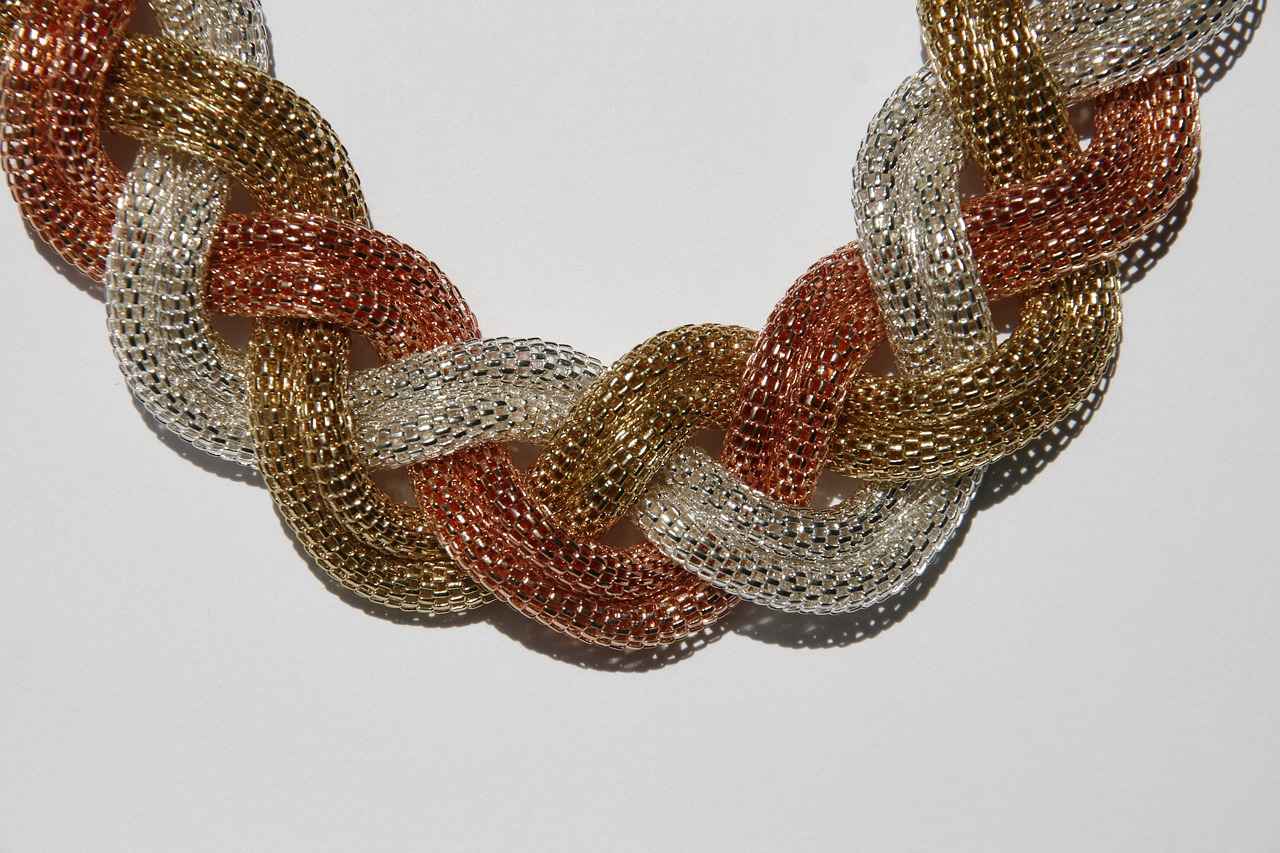
What Makes Jewelry Designer-Worthy?
Understanding what makes jewelry designer-worthy is essential for anyone looking to make informed investments in the luxury market. Designer jewelry is not just about aesthetics; it embodies a rich tapestry of craftsmanship, brand heritage, and unique design features that collectively contribute to its investment potential. This section will delve into these critical elements, providing insights that will help you recognize valuable pieces.
Craftsmanship is the cornerstone of designer jewelry. It refers to the skill and artistry involved in creating each piece. High-quality designer jewelry often showcases intricate detailing, superior finishing, and a level of precision that sets it apart from mass-produced items. The time and effort invested in crafting a piece can significantly enhance its value. For instance, brands that employ skilled artisans to handcraft their jewelry typically produce items that appreciate over time.
The heritage of a brand plays a pivotal role in determining the worth of its jewelry. Established brands with a long history often carry a legacy that adds intrinsic value to their pieces. Collectors and investors are usually more inclined to purchase jewelry from brands that have a reputation for quality and exclusivity. This brand recognition not only assures buyers of the authenticity and quality of the jewelry but also enhances its resale potential.
Unique design features can significantly contribute to a piece’s desirability and value. Designer jewelry often incorporates exclusive design elements that reflect the brand’s identity and artistic vision. Whether it’s a signature motif, an innovative use of materials, or a limited edition release, these features can make a piece stand out in the market. Investors should pay close attention to such characteristics, as they often indicate a higher potential for appreciation.
Limited edition pieces often command higher prices due to their scarcity. When a designer releases a limited number of items, it creates a sense of exclusivity that can drive demand. Collectors often seek out these pieces, knowing they are less likely to be available in the future. As a result, limited editions can yield higher returns on investment compared to standard collections.
Staying informed about market trends is crucial for making savvy investments in designer jewelry. Trends can fluctuate based on consumer preferences, economic conditions, and even celebrity endorsements. By understanding these trends, investors can better predict which pieces are likely to appreciate in value over time. For example, certain styles may become fashionable, leading to increased demand and higher prices.
To evaluate the investment potential of designer jewelry, consider factors such as craftsmanship, brand heritage, and unique design features. Additionally, researching the current market trends and understanding the resale value of similar pieces can provide valuable insights. Consulting with experts or utilizing market analysis tools can further enhance your ability to make informed decisions.
In conclusion, recognizing the characteristics that define designer jewelry is essential for anyone looking to invest wisely. By focusing on craftsmanship, brand heritage, and unique design features, you can identify pieces that not only captivate the eye but also hold significant investment potential.

How to Assess Jewelry Quality?
When it comes to investing in jewelry, understanding how to assess quality is paramount. The jewelry market can be complex, with numerous factors influencing the value of each piece. In this section, we will delve into the key elements that determine the quality of jewelry, focusing on materials, gemstone authenticity, and manufacturing techniques.
- Materials: The choice of materials is one of the most significant indicators of jewelry quality. High-quality pieces are often made from precious metals such as gold and platinum, which not only enhance the aesthetic appeal but also contribute to the overall value. Additionally, the use of gemstones like diamonds, rubies, and sapphires can significantly elevate a piece’s worth.
- Gemstone Authenticity: Authentic gemstones are crucial for investment. Verified stones possess intrinsic value that imitations lack. When assessing authenticity, look for certification from reputable gemological laboratories. This guarantees that the gemstones have been tested for quality and authenticity, ensuring that you are making a sound investment.
- Manufacturing Techniques: The craftsmanship behind a piece of jewelry plays a vital role in its quality. Intricate designs and meticulous attention to detail can indicate a higher level of skill and effort in the creation of the piece. Techniques such as handcrafting versus mass production can significantly impact the value. Handcrafted jewelry often carries a premium due to the personal touch and unique characteristics that cannot be replicated.
The materials used in jewelry not only affect its appearance but also its durability and resale potential. For instance, gold and platinum are known for their resistance to tarnishing and corrosion, making them ideal for long-lasting pieces. Furthermore, the purity of these metals, indicated by karat weight, can also influence value. The higher the karat, the more valuable the piece generally is.
To ensure that you are investing in genuine gemstones, consider the following steps:
- Request a certificate from a recognized gemology laboratory.
- Examine the stone for inclusions or imperfections, which can indicate authenticity.
- Consult with a reputable jeweler or gemologist for expert verification.
Craftsmanship is a reflection of the skill and artistry involved in creating jewelry. High-quality pieces often feature intricate designs, which can be a sign of superior craftsmanship. Look for details such as:
- Precise stone settings that hold gemstones securely.
- Smooth finishes and well-executed joins.
- Unique design elements that enhance the overall aesthetic.
Investing in jewelry requires a keen eye for quality. By understanding the importance of materials, gemstone authenticity, and craftsmanship, you can make informed decisions that will benefit your investment portfolio.
What Are the Key Materials Used in Designer Jewelry?
Designer jewelry is often synonymous with luxury and elegance, captivating the hearts of collectors and enthusiasts alike. One of the essential aspects that elevate designer jewelry is its use of high-quality materials. In this section, we will delve into the significance of gold, platinum, and precious stones in enhancing both the aesthetic appeal and the intrinsic value of these exquisite pieces.
Gold has been a cherished metal for centuries, renowned for its luster and malleability. Its various karat options, such as 14K, 18K, and 24K, offer different balances of purity and strength. The higher the karat, the more gold content is present, which typically translates to a higher value. Moreover, gold can be alloyed with other metals to create unique colors, such as rose gold or white gold, adding to its versatility in design.
Platinum is another premium material beloved by jewelry designers. It is denser and more durable than gold, making it an ideal choice for settings that require strength, such as engagement rings. Its natural white sheen complements a variety of gemstones, enhancing their brilliance. Additionally, platinum is hypoallergenic, making it suitable for those with sensitive skin. Its rarity also contributes to its high market value, making platinum pieces particularly sought after by collectors.
The inclusion of precious stones such as diamonds, rubies, sapphires, and emeralds significantly enhances the overall value of designer jewelry. These gemstones are evaluated based on the Four Cs: cut, color, clarity, and carat weight. A well-cut diamond, for example, reflects light beautifully, increasing its desirability and price. Furthermore, rare gemstones often appreciate in value over time, making them not only a stunning addition to any piece but also a wise investment.
The quality of materials is essential, but the level of craftsmanship is equally crucial in designer jewelry. Exceptional artisanship ensures that high-quality materials are transformed into stunning pieces that stand the test of time. Intricate details, such as hand-engraving or unique settings, can elevate a piece’s aesthetic and monetary value. Buyers should look for signs of meticulous craftsmanship, as this often indicates a higher level of investment potential.
When considering investment-worthy designer jewelry, it’s vital to evaluate the materials used. Opting for pieces that feature a combination of high-quality metals and rare gemstones can significantly enhance their investment potential. Additionally, understanding the market demand for specific materials can guide purchasing decisions. For example, as trends shift towards sustainable and ethically sourced materials, pieces that align with these values may see increased interest and value over time.
In summary, the significance of materials like gold, platinum, and precious stones in designer jewelry cannot be overstated. Their quality not only enhances the aesthetic appeal but also contributes to the overall value of the piece. By understanding these materials and their implications, investors can make informed decisions that align with their financial goals and personal tastes.
Why Is Gemstone Authenticity Important?
In the world of jewelry investment, gemstone authenticity is not just a matter of preference; it is a critical component that influences both the initial purchase and the future resale value of a piece. Understanding how to verify the authenticity of gemstones can help investors avoid costly mistakes and ensure they are acquiring genuine items.
How Do You Verify Gemstone Authenticity?
- Certification from Reputable Laboratories: One of the most reliable methods to confirm a gemstone’s authenticity is to obtain a certificate from a recognized gemological laboratory. These organizations conduct thorough testing and provide detailed reports on the gemstone’s characteristics, including its origin and any treatments it may have undergone.
- Visual Inspection: Experienced jewelers can often identify authentic gemstones through visual inspection. Look for unique inclusions, color zoning, and other natural characteristics that differentiate real stones from synthetics.
- Testing Tools: There are various tools available, such as refractometers and spectroscopes, that can help in identifying gemstones. These tools measure specific properties of the stones that can indicate authenticity.
Why Does Authenticity Affect Resale Value?
The resale value of jewelry is heavily impacted by the authenticity of its gemstones. Here are some key reasons:
- Market Demand: Authentic gemstones are in higher demand among collectors and investors. This demand directly correlates with resale value, as buyers are willing to pay a premium for genuine stones.
- Brand Reputation: Many luxury brands are known for their commitment to quality and authenticity. A piece with verified gemstones from a reputable brand can command a significantly higher price on the resale market.
- Investment Security: Buyers are more likely to invest in jewelry that comes with a guarantee of authenticity. This assurance not only increases buyer confidence but also enhances the overall marketability of the piece.
What Are the Risks of Buying Non-Authentic Gemstones?
Investing in non-authentic gemstones poses several risks:
- Financial Loss: Purchasing counterfeit or synthetic stones can lead to substantial financial losses, especially if the buyer is unaware of the stone’s true nature.
- Legal Issues: In some cases, selling counterfeit gemstones can lead to legal repercussions, including fraud charges.
- Emotional Impact: Investing in jewelry is often an emotional decision. Discovering that a cherished piece is not authentic can lead to disappointment and mistrust in the market.
In conclusion, the importance of gemstone authenticity cannot be overstated. By taking the necessary steps to verify gemstones, investors can protect their investments and ensure that they are acquiring pieces that will hold their value over time. Understanding the nuances of gemstone authenticity is essential for anyone looking to navigate the complex world of jewelry investment successfully.
How Does Craftsmanship Impact Value?
The world of jewelry is not just about aesthetics; it is also a realm where craftsmanship plays a pivotal role in determining a piece’s value. The intricate designs, meticulous attention to detail, and the skill of the artisans involved can significantly elevate a jewelry item’s market appeal. In this section, we will explore how these elements contribute to the overall worth of designer jewelry.
What Defines High-Quality Craftsmanship?
High-quality craftsmanship is characterized by several key factors:
- Attention to Detail: Exceptional jewelry often showcases intricate details that highlight the artisan’s skill. Whether it’s the precision of a setting or the finesse in a carving, these details can make a piece stand out.
- Technique and Skill: The techniques used in crafting jewelry—like hand-engraving, stone setting, and metalworking—require years of training and experience. Mastery of these techniques is often reflected in the quality of the final product.
- Design Complexity: Unique and complex designs often indicate a higher level of craftsmanship. Pieces that incorporate multiple elements, such as mixed metals or various gemstones, can demonstrate both creativity and skill.
Why Is Craftsmanship Important in Jewelry?
Craftsmanship is crucial for several reasons:
- Value Retention: Jewelry that is well-crafted tends to retain its value over time. Buyers often seek pieces that are not only beautiful but also durable and well-made.
- Market Appeal: Intricate designs and superior craftsmanship can make a piece more desirable, thus increasing its marketability. Collectors and investors are often willing to pay a premium for items that showcase exceptional skill.
- Brand Reputation: Renowned designers are often recognized for their craftsmanship. A strong reputation in the industry can enhance the perceived value of their pieces, making them more sought after.
How to Evaluate Craftsmanship When Buying Jewelry?
When investing in jewelry, it’s essential to assess craftsmanship:
- Inspect the Details: Look closely at the piece. Are the edges smooth? Are the stones set securely? Attention to these details can reveal a lot about the quality of craftsmanship.
- Research the Brand: Investigate the brand’s history and reputation for craftsmanship. Brands known for their meticulous work often produce pieces that are more valuable.
- Seek Expert Opinions: If in doubt, consult with a jewelry expert or appraiser. Their insights can help you determine whether a piece is worth the investment based on its craftsmanship.
In summary, craftsmanship is a fundamental aspect that influences the value of jewelry. By understanding the elements that contribute to high-quality craftsmanship, buyers can make informed decisions and invest in pieces that not only appeal visually but also promise lasting value.
What Brands Are Recognized for Investment-Worthy Jewelry?
When it comes to investment-worthy jewelry, certain brands stand out as symbols of luxury and quality. These designer labels are not only known for their exquisite craftsmanship but also for their ability to retain and even appreciate in value over time. In this section, we will explore some of the most renowned brands recognized for producing pieces that are worthy of investment.
Investment-worthy jewelry often comes from brands with a rich heritage and a solid reputation for quality. The combination of craftsmanship, design innovation, and brand prestige contributes to the overall value of the pieces they produce. Let’s delve into some of these prestigious brands.
- Tiffany & Co. – Known for its iconic blue boxes, Tiffany & Co. offers a range of timeless pieces, particularly their diamond engagement rings and signature collections that often appreciate in value.
- Cartier – With a legacy that dates back to 1847, Cartier is synonymous with luxury. Their intricate designs and use of high-quality materials make their pieces highly sought after.
- Van Cleef & Arpels – This brand is famous for its unique, whimsical designs and exceptional craftsmanship. Their Alhambra collection, in particular, is considered a staple for collectors.
- Bulgari – Renowned for bold designs and vibrant gemstones, Bulgari’s pieces often stand out in the market. Their vintage collections, especially, have shown significant appreciation over the years.
- Chopard – Known for their luxury watches and jewelry, Chopard combines elegance with high-quality craftsmanship, making their pieces desirable for investors.
Each of these brands has established a unique identity that resonates with consumers. The heritage of craftsmanship, along with a commitment to using only the finest materials, enhances their reputation. Additionally, their marketing strategies and collaborations with celebrities and influencers keep them in the public eye, further solidifying their status as investment-worthy.
When selecting jewelry from these brands, consider the following:
- Rarity: Limited edition pieces or those with unique designs tend to have higher appreciation potential.
- Condition: Ensure that the piece is in excellent condition, as wear and tear can significantly affect value.
- Documentation: Always seek pieces that come with original packaging, certificates of authenticity, and receipts, as these can enhance resale value.
Staying informed about market trends is crucial. Brands that maintain a strong presence in the luxury market often see their pieces retain value better than others. Monitoring auction results and market reports can provide insights into which brands and styles are currently in demand.
In conclusion, investing in designer jewelry from renowned brands can be a smart financial decision. By understanding the characteristics that make certain pieces valuable and following market trends, you can make informed choices that enhance your collection and investment portfolio.
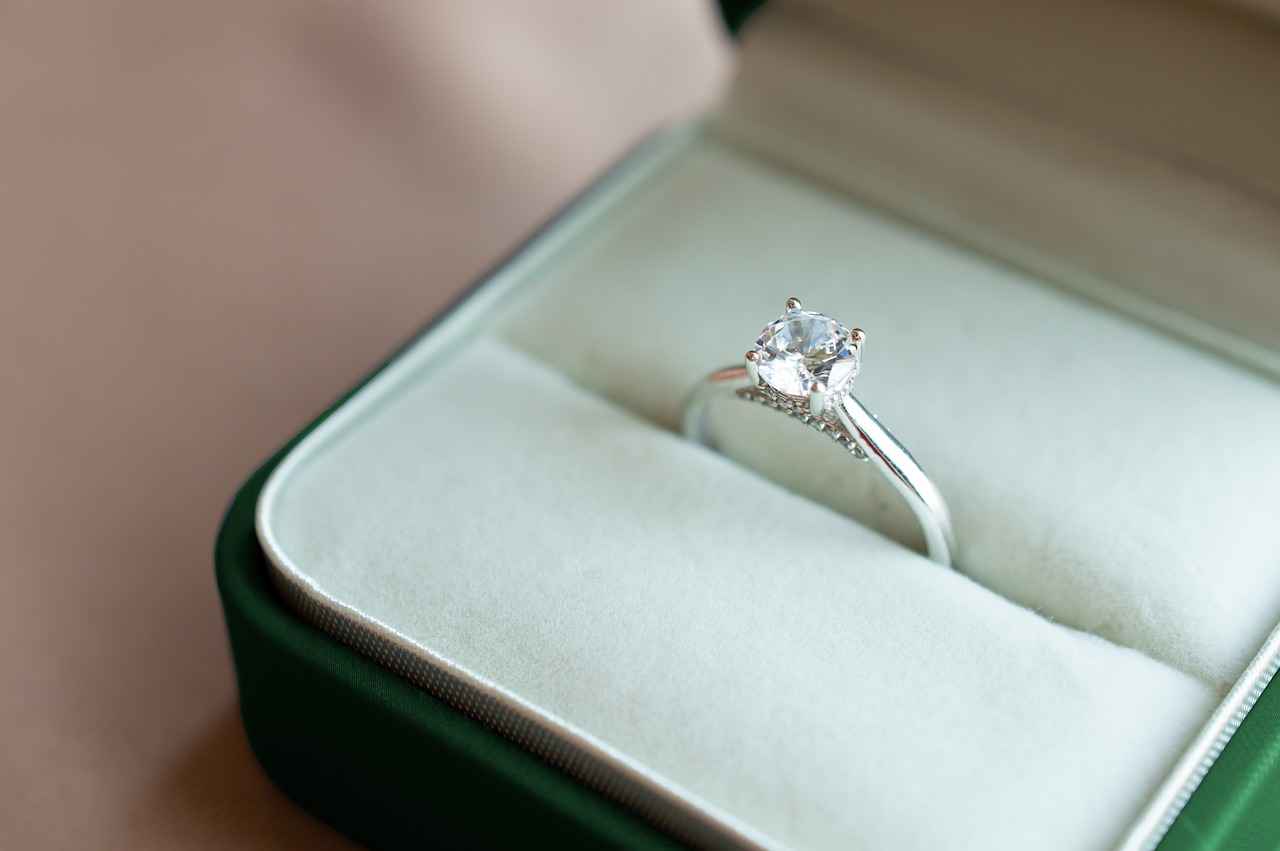
How to Research Market Trends in Jewelry?
Understanding the dynamics of the jewelry market is essential for anyone looking to make informed investment decisions. Staying informed about market trends is vital for making savvy investments. This article will explore various methods to research current trends and understand their impact on jewelry value.
Researching market trends allows investors to identify potential opportunities and risks. By understanding the current landscape, investors can make strategic decisions that align with market demands. This ensures that investments are not only timely but also positioned for future growth.
- Online Marketplaces: Websites like eBay and Etsy provide valuable insights into current pricing and demand for various jewelry pieces.
- Social Media: Platforms such as Instagram and Pinterest are excellent resources for identifying emerging trends and popular styles among consumers.
- Industry Reports: Accessing reports from organizations like the Gemological Institute of America (GIA) can provide in-depth analyses of market movements and forecasts.
- Fashion Shows: Attending or following major fashion events can help you spot upcoming trends and designer collections that may influence the jewelry market.
Auction houses like Sotheby’s and Christie’s offer a wealth of information regarding market trends. Analyzing auction results can provide insights into:
- Demand: High sale prices for certain pieces indicate strong demand, which can signal a trend.
- Rarity: Unique items that fetch high prices may indicate a growing interest in specific styles or materials.
- Market Fluctuations: Regularly tracking auction results can help investors understand how market dynamics shift over time.
Various resources can aid in market analysis, including:
- Jewelry Magazines: Publications like JCK and National Jeweler provide valuable insights into industry trends and expert opinions.
- Online Forums: Engaging in discussions on platforms like Reddit or specialized jewelry forums can provide anecdotal insights from other investors and enthusiasts.
- Blogs and Influencers: Following jewelry bloggers and influencers can help you stay updated on the latest trends and consumer preferences.
Utilizing data analytics tools can significantly enhance your research efforts. By analyzing data from various sources, you can:
- Identify Patterns: Look for recurring themes in pricing, styles, and materials that can indicate future trends.
- Predict Demand: Use historical data to forecast which types of jewelry may see increased interest.
- Assess Market Sentiment: Analyze consumer reviews and feedback to gauge overall sentiment towards specific brands or styles.
Staying updated with the latest news is crucial for any investor. Consider:
- Newsletters: Subscribe to industry newsletters that provide updates on market trends and new collections.
- Podcasts: Listening to jewelry-focused podcasts can provide expert insights and discussions on market trends.
- Webinars: Participate in webinars hosted by industry experts to gain knowledge about current trends and future predictions.
In conclusion, staying informed about market trends in jewelry is not just beneficial but essential for making wise investment choices. By utilizing various research methods and resources, investors can gain a comprehensive understanding of the market, enabling them to make decisions that align with current demands and future potential.
What Resources Are Available for Jewelry Market Analysis?
Understanding the jewelry market is essential for making informed investment decisions. Various resources can aid in market analysis, providing insights into trends, prices, and consumer preferences. This section will outline some of the most valuable tools and platforms available for jewelry market analysis.
Online marketplaces such as eBay, Etsy, and 1stdibs serve as excellent resources for gauging current market trends. By browsing listings and completed sales, investors can analyze:
- Price Ranges: Understanding the average selling prices for similar items can help determine a fair investment price.
- Consumer Preferences: Observing which pieces are trending can provide insights into future market directions.
- Brand Popularity: Noticing which brands frequently sell can indicate their investment potential.
Price guides, such as Jewelers of America and Rapaport, offer comprehensive databases that help investors understand the valuation of various jewelry pieces. These resources provide:
- Market Reports: Regular updates on price fluctuations and market trends.
- Valuation Tools: Assistance in determining the worth of specific pieces based on current data.
Platforms like Instagram and Pinterest are invaluable for tracking emerging jewelry trends. By following popular jewelry influencers and brands, investors can gain insights into:
- Design Trends: Identifying styles that are gaining traction among consumers.
- Market Sentiment: Gauging consumer reactions to new collections and designs.
Consulting industry reports from market research firms like IBISWorld or Statista can provide a broader understanding of market dynamics. These reports often include:
- Market Size and Growth: Insights into the overall health of the jewelry market.
- Consumer Behavior Analysis: Detailed studies on purchasing habits and preferences.
Engaging in forums such as PriceScope and Reddit’s r/jewelry can offer real-time insights from fellow investors and enthusiasts. These platforms allow users to:
- Share Experiences: Discuss personal experiences with specific brands and pieces.
- Ask Questions: Gain advice from seasoned investors about market conditions and valuation.
Utilizing these diverse resources can significantly enhance your understanding of the jewelry market, enabling you to make more informed and strategic investment decisions. By combining insights from online marketplaces, price guides, social media, industry reports, and community forums, investors can develop a comprehensive view of the ever-evolving jewelry landscape.
How to Follow Auction Results for Valuable Insights?
Auction results can serve as a window into the ever-changing dynamics of the jewelry market. Understanding these outcomes is essential for anyone looking to invest wisely in designer pieces. By analyzing auction results, you can gain insights into current trends, consumer preferences, and the overall health of the market.
Auction results provide a snapshot of what buyers are willing to pay for specific items. They reflect not only the value of individual pieces but also broader market conditions. When you track these results, you can identify which styles and brands are currently in demand, allowing you to make informed investment decisions.
To effectively interpret auction results, consider the following factors:
- Final Sale Price: This figure is crucial as it indicates the market’s valuation of the item.
- Bidding Activity: A high level of bidding can signify strong interest, while a lack of bids may suggest a decline in desirability.
- Condition and Provenance: The history and condition of the piece often play significant roles in its auction success.
By analyzing auction outcomes over time, you can spot trends in:
- Material Preferences: Certain materials may become more popular, affecting their value.
- Brand Performance: Some brands consistently fetch higher prices, indicating strong market demand.
- Design Styles: Trends in design can shift, impacting which pieces are considered investment-worthy.
Once you’ve gathered auction data, apply it to your investment strategy:
- Identify Opportunities: Look for undervalued pieces that may appreciate over time.
- Monitor Market Shifts: Stay updated on changes in consumer preferences to adjust your portfolio accordingly.
- Establish Price Benchmarks: Use auction results to set realistic expectations for future resale values.
Numerous platforms provide access to auction results, including:
- Specialized Auction Houses: Websites of renowned auction houses often publish detailed results.
- Market Analysis Tools: Various online tools offer analytics and insights based on auction data.
- Jewelry Investment Blogs: Many experts share their analyses and interpretations of recent auction outcomes.
In conclusion, understanding auction results is key to navigating the jewelry market effectively. By interpreting these outcomes and applying the insights gained, you can enhance your investment strategy and make more informed decisions.
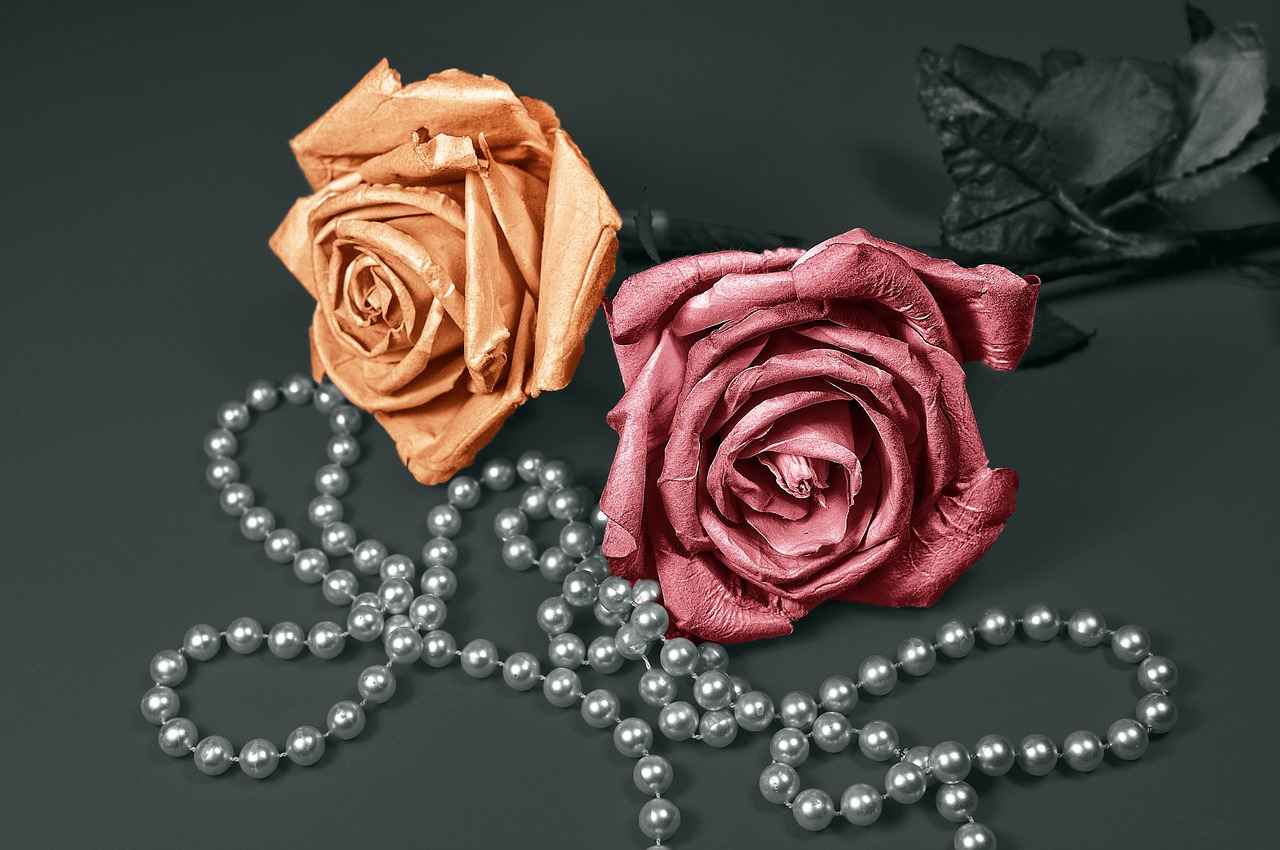
How to Spot Fakes and Replicas?
Identifying counterfeit jewelry is of utmost importance for investors looking to protect their assets and make wise purchasing decisions. This section will delve into practical tips on how to recognize fakes and ensure that you are investing in authentic pieces. Understanding the nuances of jewelry authentication can save you from potential financial loss and enhance your investment portfolio.
When assessing jewelry, be aware of several common indicators that can signal a fake:
- Weight Discrepancies: Genuine pieces often have a specific weight that reflects the materials used. If a piece feels unusually light, it may be a counterfeit.
- Poor Craftsmanship: Look for signs of shoddy workmanship, such as uneven settings, rough edges, or misaligned stones.
- Missing Hallmarks: Authentic designer jewelry typically bears a hallmark or stamp indicating its metal content and brand. Absence of these marks can be a red flag.
- Inconsistent Design: Compare the piece with verified examples from the brand. If the design differs significantly, it may not be genuine.
Establishing the provenance of a jewelry piece is crucial for verifying its authenticity. Here are some steps to follow:
- Research the Seller: Always buy from reputable dealers or auction houses with a history of selling authentic items.
- Request Documentation: Ask for certificates of authenticity or appraisals that detail the piece’s history and value.
- Use Technology: Some advanced tools, like UV light or thermal conductivity testers, can help verify the authenticity of gemstones.
Utilizing the right resources can significantly aid in identifying counterfeit jewelry:
- Online Databases: Websites dedicated to jewelry authentication can provide valuable information on brands and their hallmarking practices.
- Jewelry Appraisers: Certified appraisers can offer expert opinions and help verify the authenticity of your jewelry.
- Educational Workshops: Attend workshops or seminars that focus on jewelry identification and market trends to sharpen your skills.
Keeping abreast of market trends is essential for any investor. Trends can influence the value of jewelry significantly. For instance, a surge in demand for vintage pieces can increase the value of certain styles. Regularly following auction results and market reports can provide insights into which pieces are currently in demand.
In conclusion, recognizing counterfeit jewelry requires a keen eye and a thorough understanding of the characteristics that define authentic pieces. By being aware of common signs of fakes, verifying provenance, using available resources, and staying informed about market trends, investors can make educated decisions and safeguard their investments.
What Common Signs Indicate a Fake?
When it comes to investing in jewelry, being able to identify counterfeit pieces is paramount. The market for jewelry is vast, and unfortunately, it includes a significant number of fakes that can deceive even the most experienced collectors. In this section, we will explore the common signs that indicate a piece of jewelry may not be genuine.
- Unrealistic Pricing: If a piece is priced significantly lower than its market value, it should raise a red flag. Genuine designer jewelry typically holds its value, and prices that seem too good to be true often are.
- Missing Hallmarks: Authentic jewelry usually bears a hallmark that indicates the metal’s purity and the manufacturer’s mark. If a piece lacks these markings, it may be a fake.
- Poor Craftsmanship: Examine the piece closely for signs of poor craftsmanship. In genuine designer jewelry, the finish should be smooth, and settings should be secure. Any signs of rough edges or misaligned stones indicate a lack of quality.
- Weight Discrepancies: Genuine precious metals like gold and platinum have specific weights. If a piece feels lighter than expected, it may be made of inferior materials.
- Inconsistent Design: Designer jewelry often has a signature style. If a piece looks significantly different from known designs by the same brand, it might be a counterfeit.
- Gemstone Quality: Genuine gemstones should have a certain level of clarity and brilliance. If the stones appear dull, cloudy, or have visible inclusions, they may not be authentic.
Being aware of these signs can help you avoid costly mistakes when purchasing jewelry. Additionally, always consider obtaining a professional appraisal or certificate of authenticity, especially for high-value items. This not only provides peace of mind but also ensures that your investment is secure.
In summary, recognizing the signs of counterfeit jewelry is essential for any investor. By paying attention to pricing, craftsmanship, hallmarks, and gemstone quality, you can make informed decisions and protect your investment. Always remember that knowledge is your best defense against fakes.
How to Verify a Piece’s Provenance?
Understanding the provenance of jewelry is essential for collectors and investors alike. Provenance refers to the history of ownership of a particular piece, and it plays a crucial role in establishing both authenticity and value. In this section, we will explore how to effectively trace a piece’s history and why this process is vital in the jewelry market.
Provenance is the documented history of an item, detailing its origins and previous ownership. For jewelry, provenance can significantly enhance its appeal and worth. A well-documented history can confirm that a piece is not only genuine but also connects it to notable figures or events, thereby increasing its desirability.
- Establishes Authenticity: Provenance provides proof that a piece is authentic, which is crucial in a market rife with fakes and replicas.
- Enhances Value: Jewelry with a documented history often commands higher prices at auction or resale, as collectors seek unique stories behind their acquisitions.
- Attracts Interest: Pieces linked to famous personalities or historical events can draw attention, making them more sought after by enthusiasts.
Tracing the provenance of jewelry involves several steps:
- Research Documentation: Start by gathering any available documentation, such as receipts, certificates, or appraisals. These records can provide initial insights into the piece’s history.
- Consult Experts: Reach out to gemologists, appraisers, or auction houses that specialize in high-end jewelry. Their expertise can help verify the authenticity and history of the piece.
- Utilize Online Databases: Several online platforms and databases track jewelry sales and ownership histories. Websites dedicated to auction results can be invaluable in tracing previous owners.
- Engage with the Community: Join forums or social media groups focused on jewelry collecting. Engaging with fellow collectors can provide insights and leads on tracing provenance.
To establish provenance, certain documents are vital:
- Original Purchase Receipts: These are crucial for proving the initial sale and can provide details about the seller and date of purchase.
- Certificates of Authenticity: These documents, often issued by reputable gemological laboratories, confirm the piece’s authenticity and can enhance its value.
- Historical Records: Any historical context related to the piece, such as previous ownership by a notable individual, can significantly boost its provenance.
While tracing provenance is essential, it can also be challenging:
- Incomplete Records: Many pieces may lack comprehensive documentation, making it difficult to establish a clear history.
- Counterfeit Documentation: Some sellers may present forged documents to mislead buyers, necessitating careful scrutiny of all provided information.
- Market Variability: The jewelry market is constantly evolving, and trends can shift, impacting how provenance is perceived and valued.
In conclusion, understanding and verifying a piece’s provenance is crucial for anyone looking to invest in jewelry. By establishing a clear history, collectors can ensure they are making informed decisions that will enhance their investment’s value over time.

What Are the Best Practices for Jewelry Care?
Proper care is essential for maintaining the value of your jewelry over time. By following best practices for cleaning, storing, and preserving designer jewelry, you can protect your investment and ensure it remains in excellent condition.
Cleaning methods vary depending on the materials used in your jewelry. Here are some tips:
- Gold and Platinum: Use a soft cloth to gently buff the surface. For deeper cleaning, a mixture of warm water and mild soap can be used. Avoid harsh chemicals.
- Silver: To prevent tarnishing, store silver pieces in anti-tarnish pouches or cloths. Clean with a silver polish cloth to restore shine.
- Gemstones: Different gemstones require specific care. For instance, soft stones like opals and pearls should be cleaned with a damp cloth, while harder stones can withstand ultrasonic cleaners.
Storing jewelry correctly is crucial for maintaining its condition. Here are some effective storage solutions:
- Jewelry Boxes: Use a dedicated jewelry box with compartments to prevent pieces from scratching each other. Look for boxes lined with soft fabric.
- Individual Pouches: Store delicate items like necklaces in individual pouches to avoid tangling and scratching.
- Climate Control: Keep jewelry in a cool, dry place away from direct sunlight and humidity, as these factors can cause damage over time.
In addition to cleaning and storage, taking precautions can help protect your jewelry:
- Avoid Wearing During Activities: Remove jewelry before engaging in physical activities, swimming, or using cleaning products, as these can cause scratches and damage.
- Regular Inspections: Periodically check for loose stones or signs of wear. Addressing small issues promptly can prevent more significant damage.
- Professional Maintenance: Consider having your jewelry professionally cleaned and inspected at least once a year, especially for high-value pieces.
Regular maintenance not only keeps your jewelry looking beautiful but also preserves its value. Here are a few reasons why:
- Prevention of Damage: Regular cleaning and inspections can catch potential issues before they escalate.
- Enhanced Longevity: Proper care can extend the life of your jewelry, allowing you to enjoy it for years to come.
- Retained Value: Well-maintained jewelry is more likely to retain its market value, making it a wise investment.
In conclusion, by following these best practices for cleaning, storing, and preserving your designer jewelry, you can protect your investment and ensure that it remains a cherished part of your collection for many years. Remember, the right care not only enhances the beauty of your pieces but also safeguards their value in the long run.
How to Clean and Maintain Designer Jewelry?
Jewelry cleaning and maintenance is essential for preserving the beauty and value of your designer pieces. Different materials require specific cleaning methods to avoid damage. Here, we will explore various cleaning techniques tailored to different types of jewelry, ensuring that your investments remain in pristine condition.
Regular cleaning not only enhances the appearance of jewelry but also extends its lifespan. Dirt, oils, and grime can accumulate over time, dulling the shine and potentially leading to more significant issues such as tarnishing or stone loosening. By understanding the right cleaning methods, you can protect your investment.
- Gold Jewelry: Use a mixture of warm water and mild dish soap. Soak the piece for about 15 minutes, then gently scrub with a soft-bristle toothbrush. Rinse thoroughly and pat dry with a soft cloth.
- Silver Jewelry: Silver can tarnish easily. To clean, use a silver polishing cloth or a mixture of baking soda and water to create a paste. Apply gently, rinse, and dry to restore its shine.
- Platinum Jewelry: Similar to gold, platinum can be cleaned with warm soapy water. However, avoid harsh chemicals. A gentle scrub with a soft cloth will do the trick.
- Gemstone Jewelry: Depending on the type of gemstone, cleaning methods may vary. Generally, use a soft cloth for regular maintenance. For deeper cleaning, warm soapy water is safe for most stones, but always check specific guidelines for delicate gems.
- Pearls: Pearls require special care. Wipe them after wearing with a soft cloth to remove oils. For deeper cleaning, use a damp cloth and avoid soaking them in water.
To effectively clean your jewelry, consider investing in the following tools:
- Soft-bristle Toothbrush: Ideal for reaching intricate designs without scratching.
- Jewelry Cleaning Cloths: Microfiber cloths are perfect for polishing and removing smudges.
- Ultrasonic Cleaners: For a deeper clean, these devices can effectively remove dirt from hard-to-reach places.
The frequency of cleaning depends on how often you wear your jewelry. For pieces worn daily, a quick clean every few weeks is advisable. For special occasion jewelry, a thorough cleaning before and after use can help maintain its condition.
- Using Harsh Chemicals: Avoid bleach or ammonia, as these can damage the metal and stones.
- Soaking Delicate Pieces: Always check if soaking is safe for your jewelry type.
- Neglecting Regular Maintenance: Regular cleaning prevents buildup that can lead to costly repairs.
By following these guidelines, you can ensure that your designer jewelry remains stunning and retains its value over time. Remember, proper care and maintenance are key to protecting your investment.
What Storage Solutions Preserve Jewelry Value?
When it comes to preserving the beauty and value of your jewelry, proper storage is absolutely crucial. Jewelry can be delicate, and exposure to elements like air, moisture, and even other pieces can lead to significant wear and tear. In this section, we will delve into effective storage solutions that will help maintain the condition of your treasured items.
Storing jewelry correctly is essential for maintaining its condition. Improper storage can lead to scratches, tarnishing, and even loss of stones. Understanding the importance of proper storage methods can extend the lifespan of your pieces and keep them looking as stunning as the day you bought them.
- Jewelry Boxes: Invest in a high-quality jewelry box that offers compartments for different types of jewelry. This prevents tangling and scratching. Look for boxes lined with soft materials to cushion your pieces.
- Anti-Tarnish Pouches: For silver jewelry, consider using anti-tarnish pouches or cloths. These specially designed materials help to absorb moisture and prevent tarnishing.
- Stackable Trays: Stackable trays can be a great space-saving solution. They allow for organized storage and easy access to your jewelry collection.
- Individual Bags: Store each piece in its own soft fabric bag, especially if you have items that are prone to scratching or tangling.
- Climate-Controlled Environment: If possible, store your jewelry in a climate-controlled environment. Extreme temperatures and humidity can cause damage over time.
Organization is key to efficient storage. Consider categorizing your jewelry by type, occasion, or even color. This not only makes it easier to find what you need but also helps you keep track of your collection. Utilize trays and dividers to keep different categories separate.
- Mixing Different Metals: Storing different types of metals together can lead to scratches and tarnishing. Always separate gold, silver, and costume jewelry.
- Overcrowding: Avoid overstuffing your jewelry box. Overcrowding can cause pieces to become damaged. Make sure there is enough space for each item.
- Ignoring Temperature and Humidity: As mentioned, temperature and humidity can have detrimental effects. Avoid storing jewelry in damp basements or hot attics.
Regular maintenance of your storage solutions is necessary. Clean your jewelry box and trays periodically to remove dust and debris. Check for any signs of wear and tear on your storage items and replace them as needed. Keeping your storage area organized will also help you maintain a clear overview of your collection, making it easier to spot any missing items.
In conclusion, implementing effective storage solutions is essential for preserving the beauty and value of your jewelry. By investing in quality storage options, organizing your collection, and avoiding common mistakes, you can ensure that your jewelry remains in excellent condition for years to come.
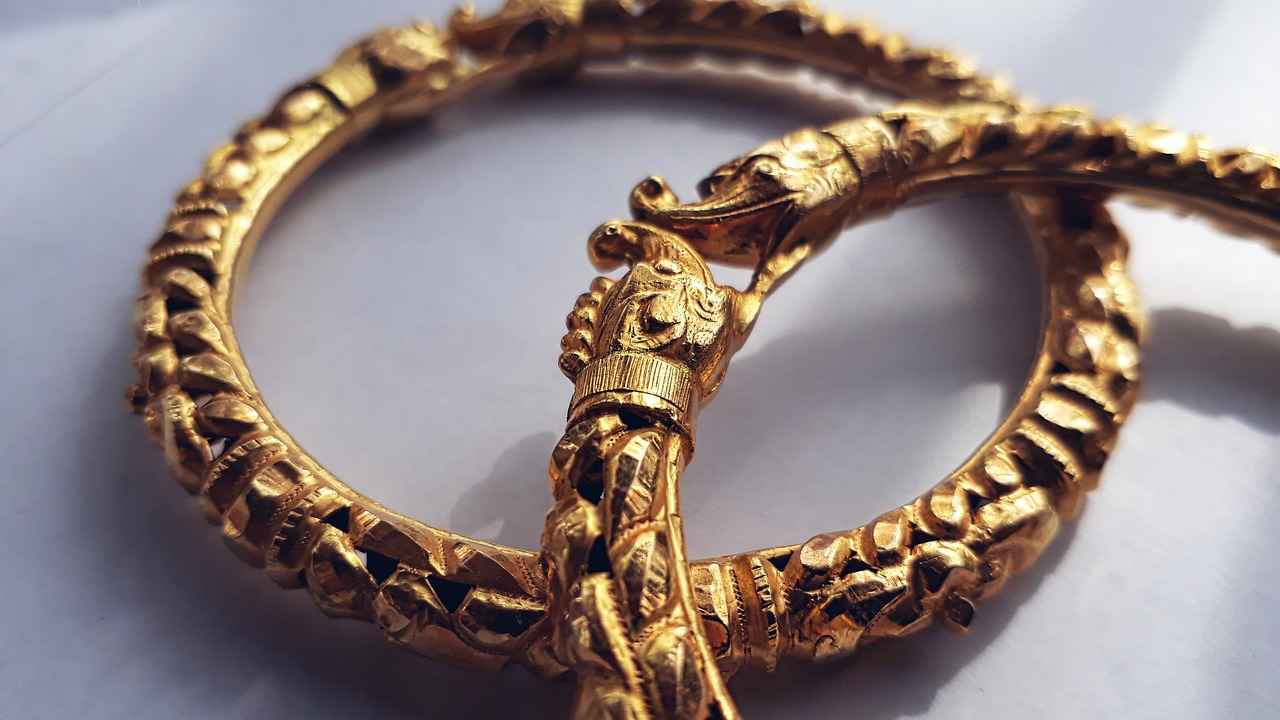
How to Evaluate Resale Potential?
Evaluating the resale potential of designer jewelry is an essential step for investors looking to maximize their returns. Understanding what influences a piece’s future marketability can guide your investment decisions. This section will delve into the key factors that impact resale value and provide insights on how to assess them effectively.
Several elements can significantly impact the resale value of jewelry. Here are some of the most important:
- Brand Reputation: Renowned brands often command higher resale prices due to their established reputation for quality and luxury.
- Condition of the Piece: Jewelry in excellent condition will typically fetch a higher price. Signs of wear and tear can diminish value.
- Market Demand: Trends in consumer preferences can affect how much buyers are willing to pay. Understanding current market demand is crucial.
- Rarity: Limited edition pieces or those featuring unique designs tend to hold their value better than mass-produced items.
- Provenance: A documented history can enhance a piece’s value, especially if it was previously owned by a notable figure.
Assessing the condition of jewelry is vital for determining its resale potential. Here are steps to evaluate a piece:
- Visual Inspection: Look for scratches, dents, or discoloration on the metal and gemstones.
- Professional Appraisal: Consider obtaining a professional appraisal to get an expert opinion on the piece’s condition and value.
- Documentation: Keep any original packaging, certificates of authenticity, and appraisals, as these can enhance resale value.
Staying informed about market trends is crucial for making savvy investment decisions. Here are some effective methods:
- Online Marketplaces: Platforms like eBay and Etsy can provide insights into current selling prices and demand for specific types of jewelry.
- Jewelry Auctions: Following auction results can help you gauge the market value of similar pieces and understand buyer behavior.
- Industry Reports: Reading reports from jewelry industry experts can give you a broader understanding of trends affecting resale values.
Timing can significantly affect your resale success. Here are some tips for choosing the right moment:
- Seasonal Trends: Certain times of the year, such as holidays, may see increased demand for jewelry.
- Market Conditions: Pay attention to economic conditions that can influence consumer spending on luxury items.
- Personal Circumstances: Consider your own financial situation and whether you need to sell quickly or can wait for a better offer.
Understanding these factors can empower you to make informed decisions regarding your jewelry investments. By evaluating resale potential carefully, you can maximize your returns and ensure that your investments remain valuable over time.
What Factors Influence Resale Value?
When it comes to investing in designer jewelry, understanding the factors that influence resale value is crucial for making informed decisions. Resale value can fluctuate significantly based on various elements, which we will explore in detail.
The brand reputation plays a vital role in determining resale value. Well-established brands with a history of quality craftsmanship and luxury appeal tend to maintain higher resale values. For instance, brands like Cartier, Tiffany & Co., and Chanel are recognized for their timeless designs and exceptional quality, making their pieces highly sought after in the resale market.
The condition of the jewelry is another critical factor. Pieces that are well-maintained, free from scratches, and retain their original shine are more likely to fetch a higher price. Jewelry with original packaging and certificates of authenticity also commands a premium. Regular cleaning and proper storage can help preserve the condition of your investment.
Market demand can significantly impact the resale value of jewelry. Trends in fashion and consumer preferences can shift, affecting the desirability of certain styles or brands. For example, vintage and retro styles may see a resurgence in popularity, leading to increased demand for specific pieces. Keeping an eye on current market trends can provide valuable insights into when to buy or sell.
Jewelry that is rare or exclusive often holds a higher resale value. Limited edition pieces or those that feature unique designs, such as one-of-a-kind artisan work, can attract collectors and enthusiasts willing to pay a premium. The scarcity of a particular item can create a sense of urgency among buyers, driving up prices.
The provenance of a piece can also enhance its value. Jewelry with a documented history, such as previous ownership by a celebrity or inclusion in notable collections, can be more appealing to buyers. Provenance adds a layer of storytelling that can make a piece more desirable.
The quality and authenticity of gemstones used in designer jewelry can significantly affect resale value. High-quality gemstones that are certified and possess exceptional clarity, color, and carat weight will enhance the overall worth of the piece. Buyers are often willing to pay more for jewelry that features authentic, ethically sourced gemstones.
The level of craftsmanship in a piece of jewelry is a testament to its quality and can greatly influence its resale value. Intricate designs and meticulous attention to detail are hallmarks of well-crafted jewelry. Pieces that showcase superior artistry and innovative designs are more likely to attract discerning buyers.
Understanding when to sell is essential for maximizing resale value. Market conditions can fluctuate, and timing your sale during periods of high demand can lead to better returns. Keeping an eye on seasonal trends, economic factors, and auction results can help you determine the best time to list your jewelry for sale.
In summary, various elements, including brand reputation, condition, market demand, and craftsmanship, significantly impact the resale value of designer jewelry. By carefully considering these factors, you can make informed decisions to enhance your investment.
How to Choose the Right Time to Sell?
When it comes to selling designer jewelry, timing can significantly influence your resale success. Understanding the market dynamics and identifying the optimal time to sell can help you maximize your return on investment. This section will delve into the crucial aspects of market timing and strategies to ensure you get the best price for your valuable pieces.
The jewelry market is subject to fluctuations based on various factors, including trends, economic conditions, and seasonal demand. Selling during peak times can lead to higher offers, while selling during a downturn may result in lower prices. Being aware of these factors can help you make informed decisions about when to sell your jewelry.
- Holiday Seasons: The months leading up to major holidays, such as Christmas and Valentine’s Day, often see an increase in demand for jewelry. Many buyers are looking for gifts, making it an excellent time to sell.
- Spring and Summer: Weddings and graduations are prevalent during these seasons, leading to higher demand for bridal and celebratory jewelry.
- Market Trends: Keeping an eye on current fashion trends can help you identify when a particular style or brand is in vogue, allowing you to sell at a premium.
To make informed decisions about when to sell, it’s essential to stay updated on market conditions. Here are some strategies:
- Follow Auction Results: Regularly check auction results to gauge the selling prices of similar pieces. This can provide valuable insights into current market demand.
- Utilize Online Platforms: Websites and forums dedicated to jewelry sales can help you track trends and prices. Engaging with these communities can also provide firsthand insights from other sellers.
- Consult Experts: Building relationships with jewelers or appraisers can provide you with expert opinions on when to sell based on market conditions.
To enhance your chances of selling at a favorable price, consider the following strategies:
- Presentation Matters: Ensure your jewelry is in excellent condition. Clean and polish your pieces, and consider having them professionally appraised to provide potential buyers with confidence in their value.
- Set a Competitive Price: Research similar items to set a competitive yet fair price. Avoid overpricing, which can deter buyers.
- Leverage Social Media: Utilize social media platforms to reach a broader audience. Stunning visuals and engaging content can attract potential buyers.
Understanding market demand is key to timing your sale. Here are some indicators:
- Consumer Trends: Pay attention to what styles or brands are gaining popularity. This can indicate a higher demand for specific pieces.
- Economic Indicators: Economic conditions can impact consumer spending. A strong economy often correlates with increased spending on luxury items, including jewelry.
- Seasonal Trends: As mentioned earlier, certain times of the year can lead to higher sales. Aligning your sale with these trends can enhance your chances of a successful transaction.
In conclusion, understanding the importance of timing in the resale of designer jewelry is essential for maximizing your investment. By monitoring market conditions, leveraging seasonal demand, and employing effective selling strategies, you can significantly enhance your chances of achieving a favorable return on your jewelry investments.
Frequently Asked Questions
- What should I look for in designer jewelry?
When evaluating designer jewelry, focus on craftsmanship, brand heritage, and unique design features. These elements play a crucial role in determining whether a piece is investment-worthy.
- How can I tell if a gemstone is authentic?
To verify gemstone authenticity, check for certification from reputable gemological laboratories and look for signs of quality, such as clarity and cut. Always ask for documentation when purchasing valuable pieces.
- What brands are most recognized for quality jewelry?
Brands like Cartier, Tiffany & Co., and Van Cleef & Arpels are renowned for producing luxury pieces that hold their value over time. Investing in these names can often lead to better returns.
- How do I research current jewelry market trends?
Stay updated by following jewelry trade publications, auction results, and online platforms that analyze market trends. Engaging with jewelry communities on social media can also provide valuable insights.
- What are the best ways to care for my jewelry?
To maintain your jewelry’s value, clean it regularly using appropriate methods for each material, and store it in a cool, dry place, preferably in a soft pouch or a jewelry box to prevent scratches.
- How can I identify fake jewelry?
Look for inconsistencies in the craftsmanship, check for proper hallmarks, and be cautious of unusually low prices. Familiarizing yourself with the characteristics of genuine pieces can help you spot fakes.

